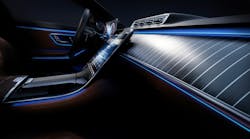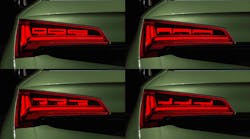While OLED (Organic LED) lighting is still in the earliest phases of actual product deployment, the technology has already yielded impressive-looking fixtures and the sleek Mirrorwall that Philips has demonstrated using its Lumiblade technology. OLEDs and LEDs are both semiconductor-based, but are made in a far different manner. Of greater importance to the lighting application, the two technologies yield vastly different lighting characteristics. LEDs deliver narrow beams that require reflection and diffusion schemes to serve in general lighting roles. OLEDs, conversely are flat panels that emit light over the surface of the device – inherently a diffused light source. Like LEDs, OLEDs have the potential to offer lower-power, longer-life, solid-state alternatives to today’s incandescent and CCFL lighting.
++++++
Newly announced R&D initiatives across Europe and in North America promise to address most all of the challenges of getting affordable OLED lighting to the mass market. The NEMO (New materials for OLEDs from solutions) project targets soluble materials for use in large-area OLED components. DuPont will also research solution-processing manufacturing techniques with a grant from the US government. Meanwhile the German government has funded the LIli (Light InLine) project to investigate large-area manufacturing processes. And finally the So-Light project in Germany will focus on OLED lighting applications.
++++++
This article was published in the Jan/Feb 2010 issue of LEDs Magazine. To read the full version of this article, please visit our magazine page, where you can download FREE electronic PDF versions of all issues of LEDs Magazine. You can also request a print copy of LEDs Magazine (available by paid subscription) and sign up for our free weekly email newsletter.




